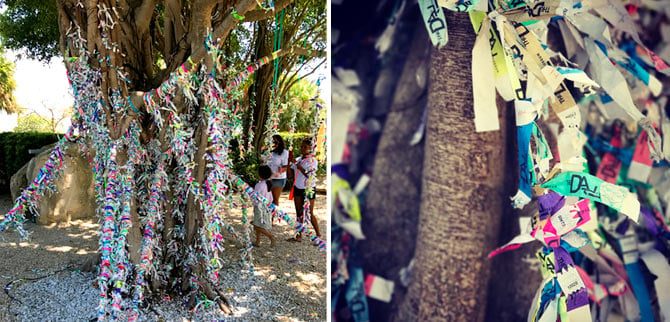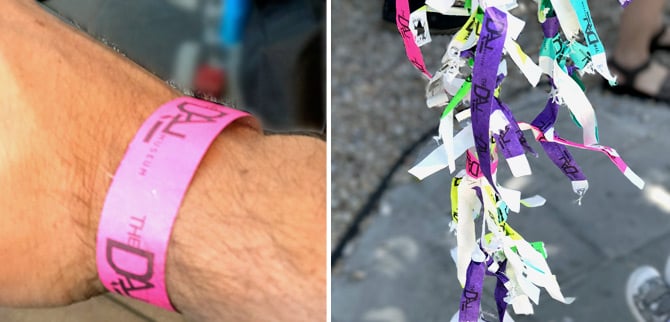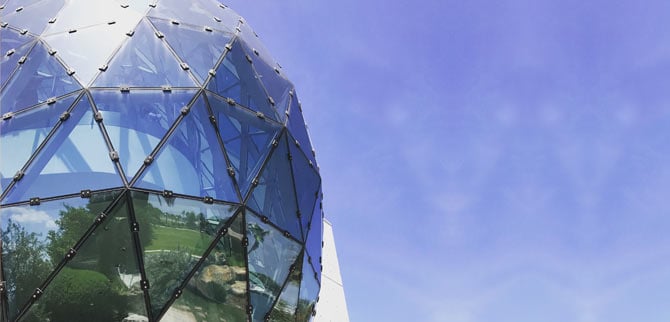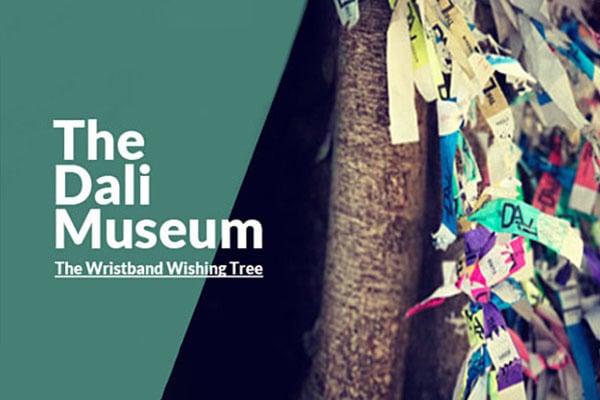Unless you’re someone that likes to keep a memento, chances are that when you leave a museum or event, your wristband goes straight in the trash?
Well, not anymore. The Salvador Dali Museum in St. Petersburg, Florida has taken a unique approach to its left over paper wristbands.
It encourages visitors to tie their used Tyvek wristbands to its 'Wishing Tree', creating a living art installation.

Hosting some of Dali’s most famous pieces, and an staggering piece of architecture in itself, The Dali Museum attracts over 4000 visitors a week, with more arriving when guest exhibits take place.
With such large visitor numbers, Museum staff use custom Tyvek wristbands to validate paid entry, prevent fraud, and protect ticket sales.
A staple of the event industry, Tyvek wristbands are a cheap yet robust method of access control.

Making museum wristbands into art
Thousands of used wristbands go through the Museum on a weekly basis. This means a lot of waste!
With people coming from around the world to visit, The Dali came up with an idea that let’s guests leave their mark.
After enjoying the the galleries, your exit takes you through to the beautiful Museum Gardens; home of the giant Banyan 'Wishing Tree.
From a distance, the tree is a real spectacle, but it isn't until you get closer that you realize its branches are laden with old paper wristbands.
What's more, each band contains a written wish by its recent owner. What a way to end your visit.

Conclusion
While Tyvek wristbands help Museums and other attractions to secure their point of entry, their uses don't end there.
This is one of the most innovative ways we've seen an event or attraction re-use its wristbands.
Not only has the Dali reduce waste, but it has create an amazing art installation that continues to grow with every visit. Dali Museum, we salute you!







